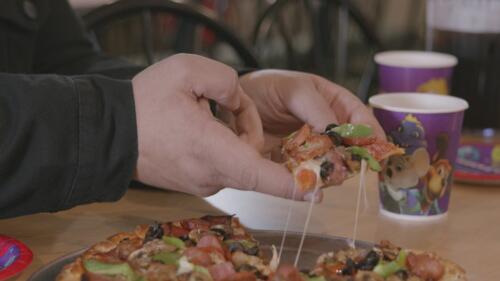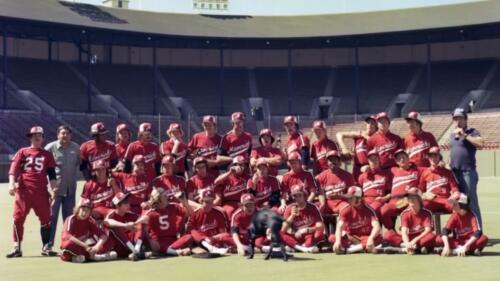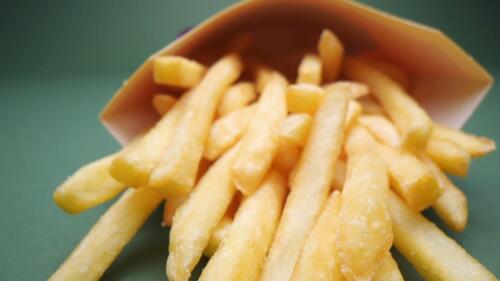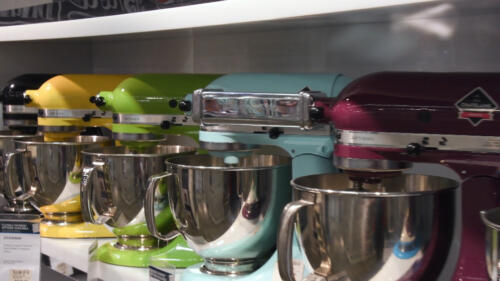Food
Food is an integral part of human history, serving as both sustenance and a symbol of culture, trade and power. From the earliest days of hunter-gatherers to modern-day globalization, what people eat has influenced the course of history.

Start Here

Coffee increased energy and alertness on the battlefield, improved morale and was even used by medics to help prevent shock.

Nathan 'Nearest' Green, who taught Jack Daniel the art of whiskey distillation, went unacknowledged for more than 150 years.

The origins of ice cream, sorbet and other chilled dairy treats are difficult to pin down—but span back to antiquity.

Peanut butter. Ice cream cones. Cotton candy. The 1904 St. Louis exposition popularized some of America’s favorite foods.
3 Iconic Food Mascots
Combat Rations
Combat Rations in WWII
During World War II, feeding thousands of troops in enemy territory wasn't easy. Discover how soldiers carried rations into battle.
Explore All Related Topics

Neolithic people were making and eating yogurt—or something like it—at least 8,000 years ago.

This comfort food classic began as a battlefield remedy.

Cereal magnate John Harvey Kellogg usually gets credit, but there are other contenders.

The dark, foamy stout wasn't the first beer they produced.

That classic boxcar design evolved from horse-drawn wagons.

The bee byproduct has been around for millennia—and not just as a sweetener.

As advancements in ice cream-making technology made it easier to churn out the dessert, community gatherings used it as a main attraction.

Dental remains from an ancient burial site in Thailand reveal evidence of betel nut-chewing.

Although sushi in some form has been part of Japanese culture for well over a thousand years, it didn’t become popular in America until the 1960s.

Families packed everything from cabbage to watermelon rinds to pork, beef and fish to sustain food supplies into the winter months.

The cola wars' strangest twist birthed the 'Pepski generation.'

Rotten meat swarming in fly larvae was likely a major component of the ancient hominin diet, says a new study.

One of the country’s most famous figures introduced America to the gooey pasta dish.

They were once viewed as unnecessary and even 'devilish.'

From ancient Egyptian beginnings to global popularity, lemonade may just be the original soft drink.

From capturing holy water in ancient vessels, to European spas advertising healthful spring water amid the Industrial Revolution, trace the evolution of bottled water and its popularity.

Eggs offer an amazing package of nutrition—and humans have been poaching wild bird eggs since time immemorial. Keeping chickens to eat their eggs is a more recent (but still ancient) practice.

Born at New England's Toll House Restaurant, chocolate chip cookies quickly rivaled apple pie as America's favorite sweet treat.

Coffee increased energy and alertness on the battlefield, improved morale and was even used by medics to help prevent shock.

Evidence suggests that people were drinking beer as far back as 13,000 years ago, while distilled liquor arrived much later.

Dim sum for Christmas? The experiences of immigrants in New York explain how the tradition began.

A health scare caused Americans (including President Eisenhower) to forgo serving cranberry sauce at their holiday tables.

From contaminated raw milk to tainted meat, outbreaks have spread rapidly through the country's food supply chain, with deadly consequences.

From Betty Crocker to Ronald McDonald, companies have used human mascots as the 'face' of their products. Not all have stood the test of time.

The origins of ice cream, sorbet and other chilled dairy treats are difficult to pin down—but span back to antiquity.

Peanut butter. Ice cream cones. Cotton candy. The 1904 St. Louis exposition popularized some of America’s favorite foods.

Some confections even played a role in U.S. history.

The origin story of spicy, saucy chicken wings has more than one hero.

Wally Amos parlayed his aunt's chocolate chip cookie recipe into a gourmet snack food juggernaut.

From stirring up coffee house rebellions to supporting the Industrial Revolution, the popular caffeinated brew has fueled global change.

'Beer barons' like Pabst, Schlitz and Busch forged brewing dynasties with their pale, effervescent lager.

These dietary staples were cultivated over thousands of years by Indigenous peoples of America.

Before McDonald's pioneered McNuggets for fast food consumption, a Cornell University researcher developed bite-size breaded chicken sticks that could be easily fried and frozen.

They didn't come from China.

This selection of enduring eateries reflects the nation's mosaic of cultures.

It's complicated.

No beer? No problem. Better refrigeration, together with innovations in making and selling frozen treats, helped steer people toward this 'refreshing and palatable food.'

By the end of the 1920s, more than 40,000 different candy bars were being made in the U.S.

The program had its largest expansion under a Republican president.

It started with some slightly moldy dough. Then it revolutionized the morning meal.

A key ingredient in the flavor was discovered on ancient pottery shards in Indonesia, revealing it has been around for a long, looooong time.

The tri-colored confection was designed to look like chicken feed and came out at a time when about half of Americans worked on farms.

While the fears may be overblown, Halloween crimes involving poison have occurred.

Which one was your favorite?

Clarence Birdseye took note of how Indigenous Canadians 'flash froze' their fish—and forever changed the way Americans ate.

From ancient Egypt to the Chicago World's Fair, pickles have had a staggeringly long run on the world's culinary stage.

The future fast-food giant started out as anything but swift, serving up slow-cooked barbecue. How did it become the behemoth it is today?

For most American kids, it wouldn’t be Halloween without trick-or-treating for candy. But that wasn’t always the case.

Did you know that New York has a state muffin and that Jell-O is the state snack of Utah?

From applesauce sucked out of a tube to shrimp cocktail and fresh vegetables, space food has come a long way.

The Curtiss Candy Company said it was inspired by a president's daughter. Baseball slugger Babe Ruth disagreed. A patent court decided the case in 1931.

The sandwich's roots trace back to ancient times, but it took on its modern form in the United States.

Find out just how these two delicious (and different) schools of bagel making came to be.

Coffee's importance can be traced across the centuries through the names we’ve come to know it by.

The first fermented beverages most likely emerged alongside the development of cereal agriculture some 12,000 years ago.

Americans eat about a million pounds of the stuff a year.

Beer: it’s the chosen beverage of English kings, Egyptian stonemasons and Homer Simpson. And it has a long and celebrated history going back to 3400 B.C.

It’s likely you’ve heard the adage “An apple a day keeps the doctor away,” and everyone knows about the reputed healing powers of a steaming bowl of chicken soup. But would you think to place potato slices on a fever-stricken patient’s forehead? Or shampoo with mayonnaise to give your mane that healthy shine? Foods have […]

It's America's favorite condiment, but ketchup's long history dates back to imperial China—and at one point it was completely tomato-free.

Over a century after Horn & Hardart opened its first Automat in New York City, take a look back at America’s first fast food chain.

The earliest farmers planted grains in order to brew beer for politically expedient feasts, according to a new study.

Nearly seven millennia before movie nights and microwaves, humans snacked on popcorn, according to a new study.

















